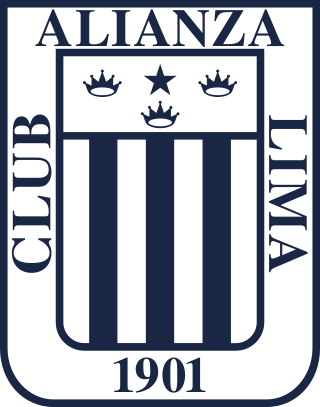
Club Alianza Lima, more commonly known as simply Alianza Lima, is a Peruvian professional sports club based in La Victoria District of Lima, Peru. The club was founded under the name of Sport Alianza on 15 February 1901 by working-class youth in the Chacaritas neighborhood of Lima. It is widely known for having one of the most historical and successful football teams in Peru; they have won a total of 25 official league titles of the Peruvian Primera División and are currently the oldest team playing in that competition, since the club was founded in 1901. According to CONMEBOL, it is considered the most popular club in Peru, and the 6th most popular club in South America, with more than 12 million fans as of April 2016.

The club is the first soccer representative of the first port of Peru, Callao, which laid the foundations for future Chalacos clubs, going from being a school club to being a professional club, gaining recognition, prestige and trust among fans of the Callao, from Lima and Peru, since today there are many clubs with the name of Atlético Chalaco, but only one is the original and traditional. [At present, Atlético Chalaco is called the "Historical Soccer Heritage of the Constitutional Province of Callao ".
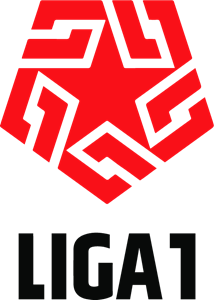
The Peru First Division, officially known as Liga 1, is the top flight of association football in Peru. It has been referred to as Torneo Descentralizado since 1966, when the first teams residing outside the Lima and Callao provinces were invited to compete in the inaugural league national competition.

Croatian Peruvians are Peruvians of Croatian descent. Mostly settled in the Peruvian capital, Lima, Croatian-Peruvians have scattered throughout the vast metropolis, but are known to have established a strong community in the Miraflores District, where strong ties to the ethnic group still remain. Due to intermarriage, most Croatian-Peruvians are of mixed ancestry. Actual conversations in Croatian are common only within first generation immigrants. Although Croatian speech in Peru has been generally lost.
Sports in Peru are popular and widespread.
British Peruvians are Peruvians of British descent. The phrase may refer to someone born in Peru of British descent. Among European Peruvians, the British were the fifth largest group of immigrants to settle in the country after the Spanish, Germans, Italians, the Swiss or/and the French.
Football is the most popular sport in Peru. Football/soccer in Peru was introduced by British immigrants, Peruvians returning from Great Britain, and by English sailors in the later half of the 19th century during their frequent stops at the port of Callao, which at that point was considered one of the most important ports of the Pacific Ocean. According to the work entitled La Difusión del Fútbol en Lima, during the last decade of the 19th century, records show that sailors were known to practice sports such as football/soccer and played against teams made up of Englishmen, Peruvians, or a mix between Englishmen and Peruvians.

Juan Bielovucic was a Peruvian aviator who set several speed and altitude aviation records in 1910–13. He was also the first person to complete a successful powered aircraft crossing of the Alps in 1913, following a 1910 attempt by his friend Jorge Chávez that ended in a fatal crash landing. He established the first aviation school in South America in Lima, Peru. Bielovucic became a colonel of the Peruvian Aviation Corps (PAC) in 1911, joined the Service Aéronautique of the French Army as a volunteer in 1914 and earned the Legion of Honour for his service in World War I. He retired from active aviation in 1920 and returned to Peru where he became the lieutenant commander of the PAC Reserve. He was also active with the French Resistance during World War II. In Croatia, he is regarded as the first Croatian aviator.
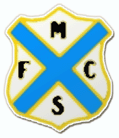
Mariscal Sucre is a Peruvian football club, located in the city of La Victoria, Lima.
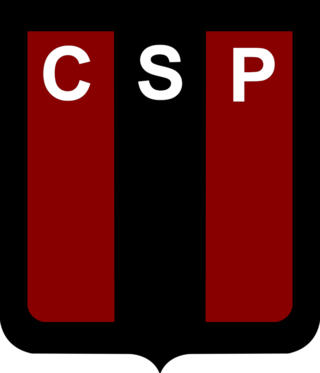
Sport Progreso was a Peruvian football club, located in the city of Lima. The club was founded with the name of club Sport Progreso and played in Peruvian Primera División from 1912 until 1933. The club won the national tournament in 1921 and 1926. In 1933, Sport Progreso was relegated and it was their last appearance in the Peruvian Primera División.

Sport José Galvez was a Peruvian football club, located in the city of Lima. The club was founded with the name of club Sport José Galvez and played in Peruvian Primera División from 1915 until 1926. The club won the national tournament in 1915 and 1916. In 1926, Sport José Galvez was relegated and it was their last appearance in the Peruvian Primera División.
Sport Inca was a Peruvian football club, located in the city of Lima. The club was founded with the name of club Sport Inca and played in Primera Division Peruana from 1912 until 1921. The club won the national tournament in 1920.

Jorge Chávez No. 1 was a Peruvian football club, located in the city of Lima. The club was founded with the name of club Jorge Chávez Nr. 1 in honor of the Peruvian aviator Jorge Chávez and played in Primera Division Peruana from 1912 until 1929. The club won the national tournament in 1913.
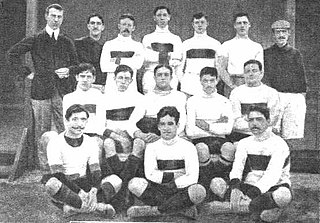
The 1912 Primera División was the first season of top-flight Peruvian football. A total of 16 teams competed in the league, The champion was Lima Cricket. This first season with organised league, covering Lima, Callao, and suburbs such as Miraflores and Barranco. It was organized by the homonymous entity, Liga Peruana de Football, currently known as Professional Football Sports Association.
The 2011 Torneo Descentralizado de Fútbol Profesional was the ninety-fifth season of Association Peruvian football. A total of 16 teams competed in the tournament, with Universidad de San Martín as the defending champion. The Torneo Descentralizado began on 12 February and concluded on 14 December with the victory of Juan Aurich over Alianza Lima in the penalty kicks of the final Play-off, giving Juan Aurich its debut Peruvian title.
The Liga de Ascenso Femenina is currently the second level league competition for women's football in Peru that officially started in 2009. Until 2019 it was the top tournament of Peruvian Primera División Femenina whose winner qualified for the Copa Libertadores de Fútbol Femenino, the South American Champions League. The competition is organised by the Peruvian Football Federation.
The 1917 Primera División was the sixth season of top-flight Peruvian football. A total of 13 teams competed in the league, The champion was Sport Juan Bielovucic. It was organized by the homonymous entity, Liga Peruana de Football, currently known as Professional Football Sports Association.
The 1920 Primera División was the ninth season of top-flight Peruvian football. A total of 9 teams competed in the league. The champion was Sport Inca. It was organized by the homonymous entity, Liga Peruana de Football, currently known as Professional Football Sports Association.
The Torneo de Promoción y Reserva is a football tournament in Peru. There are currently 16 clubs in the league. Each team will have in staff to twelve 21-year-old players, three of 19 and three experienced; whenever they be recorded in the club. The team champion in this tournament will offer two points and the runner-up a point of bonus to the respective regular team in the 2012 Torneo Descentralizado.










